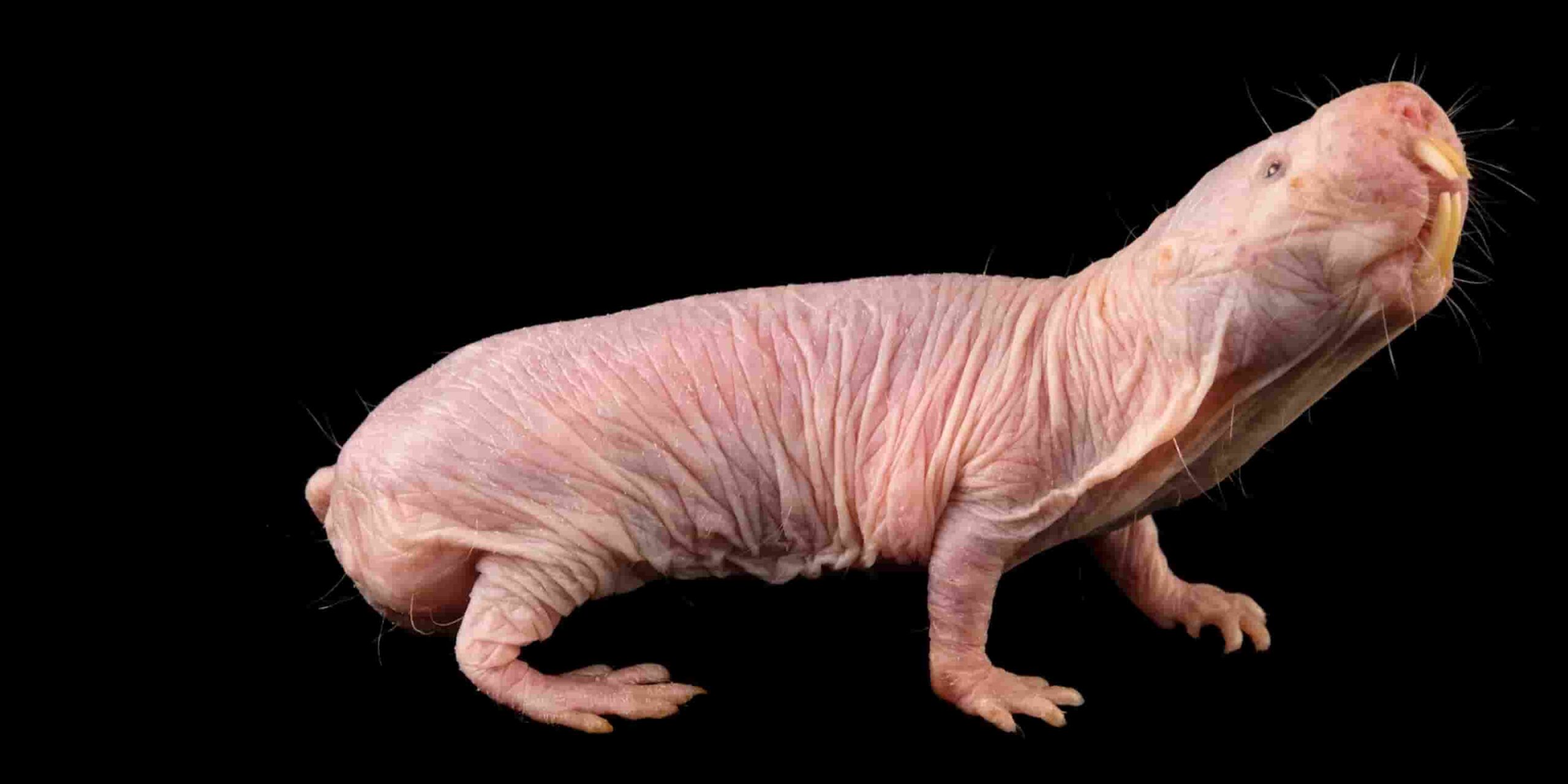Naked Mole Rat
Doodlebrary
- Scientific Classification:
- Scientific Name: Heterocephalus glaber
- Family: Bathyergidae (African mole-rats)
- Class: Mammalia
- Appearance:
- Naked mole rats are almost hairless, except for fine whiskers on their faces and a few scattered hairs on their bodies.
- They have wrinkled pink or yellowish skin and long, protruding incisors used for digging.
- Unique Teeth Structure:
- Their large incisors can move independently, and they use them like chopsticks to dig tunnels.
- The lips are sealed behind the teeth to prevent soil from entering their mouths while burrowing.
- Habitat:
- Found primarily in East Africa, especially in parts of Kenya, Ethiopia, and Somalia.
- They live in underground burrows, which they dig in arid or semi-arid environments.
- Social Structure – Eusociality:
- Naked mole rats are one of the few mammals that exhibit eusocial behavior, similar to ants or bees.
- Colonies consist of a single breeding queen and 1-3 breeding males. The rest are workers and soldiers that do not reproduce.
- They have a strict hierarchy, with the queen dominating reproductive activity.
- Longevity:
- Naked mole rats have an exceptionally long lifespan for rodents, living up to 30 years or more.
- They show few signs of aging and maintain high reproductive capacity throughout life.
- Resistance to Cancer:
- Naked mole rats are highly resistant to cancer.
- Their cells have a unique mechanism that prevents overcrowding, a factor believed to inhibit tumor growth.
- Thermoregulation:
- Unlike most mammals, they are ectothermic (“cold-blooded”) and cannot regulate their body temperature.
- They rely on environmental conditions and behavioral thermoregulation, like huddling together or retreating to warmer parts of their burrows.
- Hypoxia Resistance:
- They can survive in low-oxygen environments for extended periods by switching to a mode of metabolism similar to plants (using fructose instead of glucose).
- Diet:
- Naked mole rats are herbivorous and primarily feed on underground roots and tubers.
- They consume parts of the plant while leaving enough for regrowth, ensuring a renewable food source.
- Reproductive System:
- Only the queen breeds, and she suppresses the fertility of other females using pheromones and physical dominance.
- The queen can produce large litters, sometimes up to 20 offspring at a time.
- Communication:
- They are highly vocal, using a wide range of sounds like chirps, grunts, and squeaks to communicate within their colonies.
- Ecological Role:
- Naked mole rats play a critical role in soil aeration through their extensive burrowing activities, which can have ecological benefits by increasing soil fertility and promoting plant growth.
- Research Importance:
- They are a key model organism in aging, cancer research, and studies on social structure due to their unique physiology and long lifespan.
